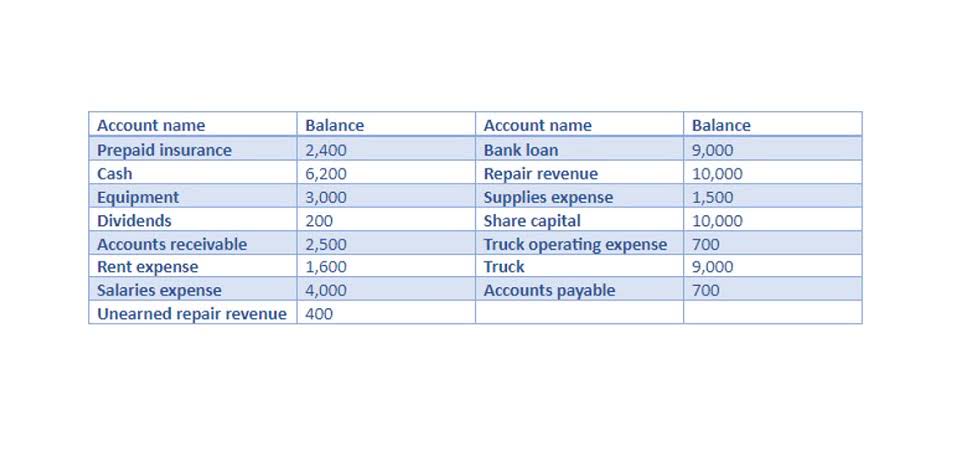Content

Businesses that sell physical products will have the extra steps of tracking inventory while companies that are service-focused will not. Smaller companies may have fewer accounts while multi-nationals will have hundreds or thousands. Journal entries of recurring monthly transactions must be performed at the time of the month-end close. This applies to such transactions as accrued expenses, amortization, depreciation, and loan interest. Here is a month-end close process flowchart to visualize some of the key steps and processes.
- An automation tool can do this for you and flag you if there’s anything mismatching.
- That’s why we emphasize a solid flow in closing each month, from when the team begins gathering information to crossing the finish line with the final financial report.
- Anyone from investors, lenders, to public regulatory agencies require these financial records, so it’s important to avoid any potential for error.
- You must adhere to a checklist in order to organize and make your month-end close process super simple.
- The data needed for the reports would be ready and available by the end of the year.
- Accounting software can ease many of the difficulties of month end closing operations.
Ignite staff efficiency and advance your business to more profitable growth. Improve the prioritization of customer calls, reduce days sales outstanding, and watch productivity rise with more dynamic, accurate, and smarter collection Bookkeeper360 Review 2023: Pricing, Features & More management processes. Understand customer data and performance behaviors to minimize the risk of bad debt and the impact of late payments. Monitor changes in real time to identify and analyze customer risk signals.
What are the Steps for the Month End Close Process?
Take a hard look at how you order goods, when you reorder them, and prices paid. If the month-end closing happens seamlessly, it ensures all records are verified. The data needed for the reports would be ready and available by the end of the year. Most importantly, the closing process accounting would help in uncovering errors. The accountants can fix these errors so they are not carried forward. Keeping track of revenue from product sales and services ensures that your business is on track with your forecasted ARR and sets you up for compliant tax filings later.

Instead of doing this manually, you can again leverage automation tools to do it for you. This process may be viewed by those outside the accounting department as time travel or financial legerdemain. Proper preparation is another important factor in ensuring the close process is conducted quickly and accurately. One https://simple-accounting.org/accounting-for-startups-the-ultimate-guide/ of the first steps in a systematized close process should be tying up the month’s loose ends. When preparing to close, contact department heads to check on budget adherence, unexpected expenditures, anticipated last-minute sales, and more. Verify anticipated vendor payments to ensure receivables will arrive on time.
Draft financial statements
Ideally, your checklist should make it easy to swap tasks between team members to keep the process moving efficiently. Once you have all your numbers nailed down, you’re ready to close the books. The process is a bit different depending on whether you’re using QuickBooks Desktop or QuickBooks Online, so we’ll go through those close processes separately.
- Reduce risk and save time by automating workflows to provide more timely insights.
- But creating one might take the time you would have used for other high-value tasks.
- If your company uses a petty cash fund, that spend will likely become invisible unless you have systems in place to track it.
- The number of reconciliations to finish, checklists to complete, documents to gather, and schedules to meet are substantial.
- All these benefits result in improved accuracy, increased efficiency, and enhanced cost savings for organizations.
It is a safeguard for your process, to rule an accurate start to next month This step concludes with polished financial statements. As a business owner, it’s always good to know how your financial statements are generated and what they contain. After all, your stakeholders will be relying on you to present how your business is doing based on your financial statements. You might find it easier to delegate these tasks to professional accountants. However, many automation tools are available to hasten and streamline your accounting process.
Month End Close Process: Importance, Checklist & Best Practices
It also automates manual tasks like financial data collection and reconciliation. Increase accuracy and efficiency across your account reconciliation process and produce timely and accurate financial statements. Drive accuracy in the financial close by providing a streamlined method to substantiate your balance sheet. The month end close process involves the recording, review, and reporting of the financial transactions that have happened in the period since the last close in the previous month. It provides a quick overview of the company’s financial health over the period and serves as a cutoff point for transactions so that the following month starts afresh.
What are the best practices for month end closing?
- Establish a clear month-end close timeline.
- Maintain accuracy.
- Streamline the reconciliation process.
- Review the financial statements.
- Learn from the mistakes.
- Manage your time.
- Foster collaboration and communication.
- Invest in training and development.